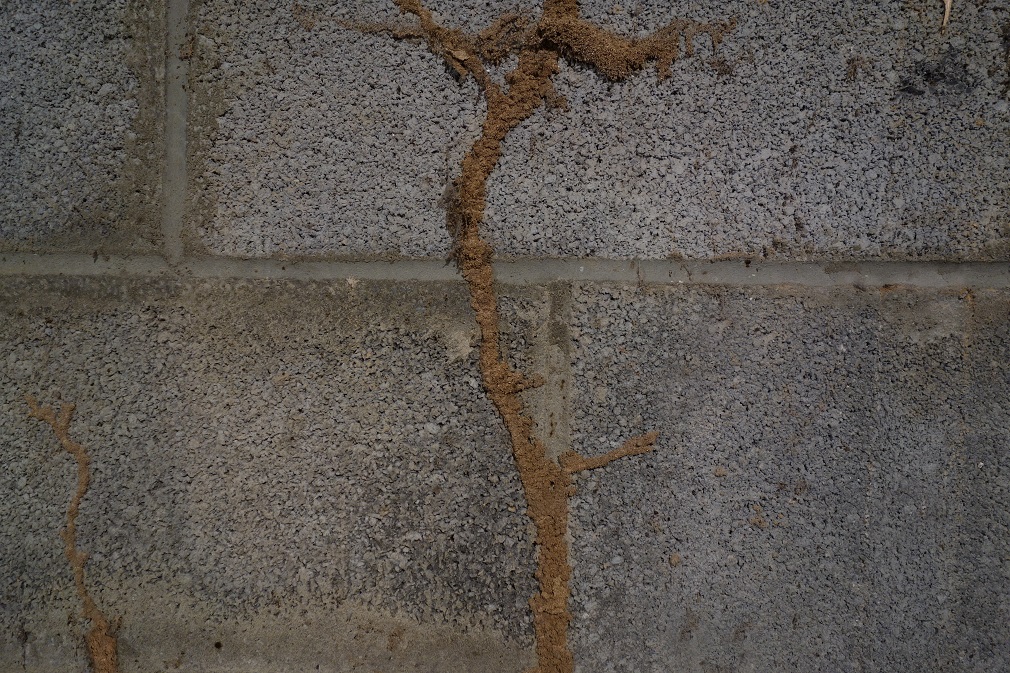Termites are massive problems for homeowners, causing over 5 billion dollars in home damage yearly!
As these pests burrow through your walls for food, they can gut your home from within by compromising the integrity of your drywall and other wooden structures.
Many homeowners wonder if any early signs can alert them to the beginning of an infestation. Finding termite mud tubes in your yard could indicate that termites infest your home!
Keep reading to learn more about termite mud tubes and ways to combat termites in your home.
What Are Mud Tubes?
Subterranean termites utilize mud tubes to access your home from their underground lairs.
Unlike drywood or dampwood termites, subterranean termites don’t nest within the wood in your home. Instead, they prefer to construct colonies deep within your yard, only venturing indoors to find their next meal.
These termites don’t live in one large hive, like wasps or ants. Instead, each area or gallery is connected with these mud-based tubes. Mud tubes bring the termites together and give them access to the wood in your home.
Termites construct their mud tubes from the soil using their saliva, integrating small pieces of chewed wood into the structures to help keep their shape. Besides wood and dirt, termites also utilize their feces to aid construction.
Talk about letting nothing go to waste!
Drywood termites usually expel their waste, or frass, from their places inside your home, and dampwood termites use their excrement to patch holes in their colonies. Because dampwood termites consume rotting or waterlogged wood, they need extra support to maintain their home.
Frass is typically a warning sign of termites, but you’ll probably never see subterranean termite droppings because they utilize them in their winding tunnels and dirt tubing. Thankfully, spotting these tiny dirt tunnels is enough to know termites are eating within.
Finding Termite Mud Tubes in Your Yard
Just because they’re a top indication of invading pests doesn’t mean these structures are easy to find or identify.
Subterranean termites aren’t giant insects and don’t require spacious spaces to wander through. These tubes may only reach up to an inch in diameter and can blend in with brick, stained concrete, or pained exterior walls.

Termite mud tubes on a concrete wall, the tunnels are used to connect the colony to a wood food source
Mud tubes may have the consistency of an ant hill or look like a mud dauber’s nest, making identification efforts difficult. When in doubt, contact a pest control company to assess the type of insect building around your home.
These structures may look like one winding, steep dirt trail. Unless you have a significant infestation, they shouldn’t be much larger than the insects themselves. A mature colony may have more members, meaning more mud tubes extending out of the ground.
Don’t panic if you see multiple large tubes branching out on the side of your home. While this does indicate a potentially serious problem, remember that agencies like proof. have trained technicians dedicated to removing their ranks.
Mud Tubes Indoors
While it’s more common to see termite mud tubes in your yard, you may begin to notice them inside too.
Unfortunately, finding this termite evidence isn’t great for your home. It could indicate termites have spread out into other spots or that a significant infestation is indoors.
Whenever you spot signs of indoor mud tubes, you must immediately contact an exterminator specializing in termites to save your home from further damage and accurately flush out the infestation.
However, rest assured knowing that finding this inside is uncommon, and most homeowners notice signs of mud tubes in their yards before they begin building inside. Partnering with proof. for termite control and prevention can help you stay on top of potential infestations!
Removing Termite Mud Tubes in Your Yard & Home
If you find one of these structures outdoors or inside, should you try destroying it?
We don’t recommend interacting with these destructive insects here at proof. While rare, soldier termites exit their colonies in waves to protect against invaders. Because of these insects’ long, sharp pincers, they could leave you with an uncomfortable bite!
Besides the potential dangers of bothering the pests, removing the mud tubes won’t impact an active infestation either. Termites are fast workers and will pause their activities to rebuild any damages to their homes.
Check out this video of subterranean termites creating their mud tubes!
So, what’s your best option whenever you have problems with termites? Trust us here at proof. Pest Control!
We utilize a four-step plan that can remove the termites plaguing your home. No more worrying about mud tubes in your yard once a trusty proof. technician stops by for a service!
After our initial inspection of your home, we’ll give you a custom treatment plan unique to your layout and situation. We don’t skimp on our examinations, either! Expect us to look around your foundation, basement, crawl space, and other termite hotspots.
We’ll then install bait stations around your home to catch foraging termites in the act. Typically, termites eat the bait and then return to the larger colony to spread their goodies around, poisoning the rest of the insects inside.
After eliminating the termites, we’ll return each year for an annual inspection to ensure these pests haven’t weaseled their back into your home. Plus, we’ll return for FREE if you see any signs of termites!
We know how important your home is to you. It’s an investment that you’ll want to protect, and proof. wants to lend a hand too. Contact us today for your termite or other pest control needs!

